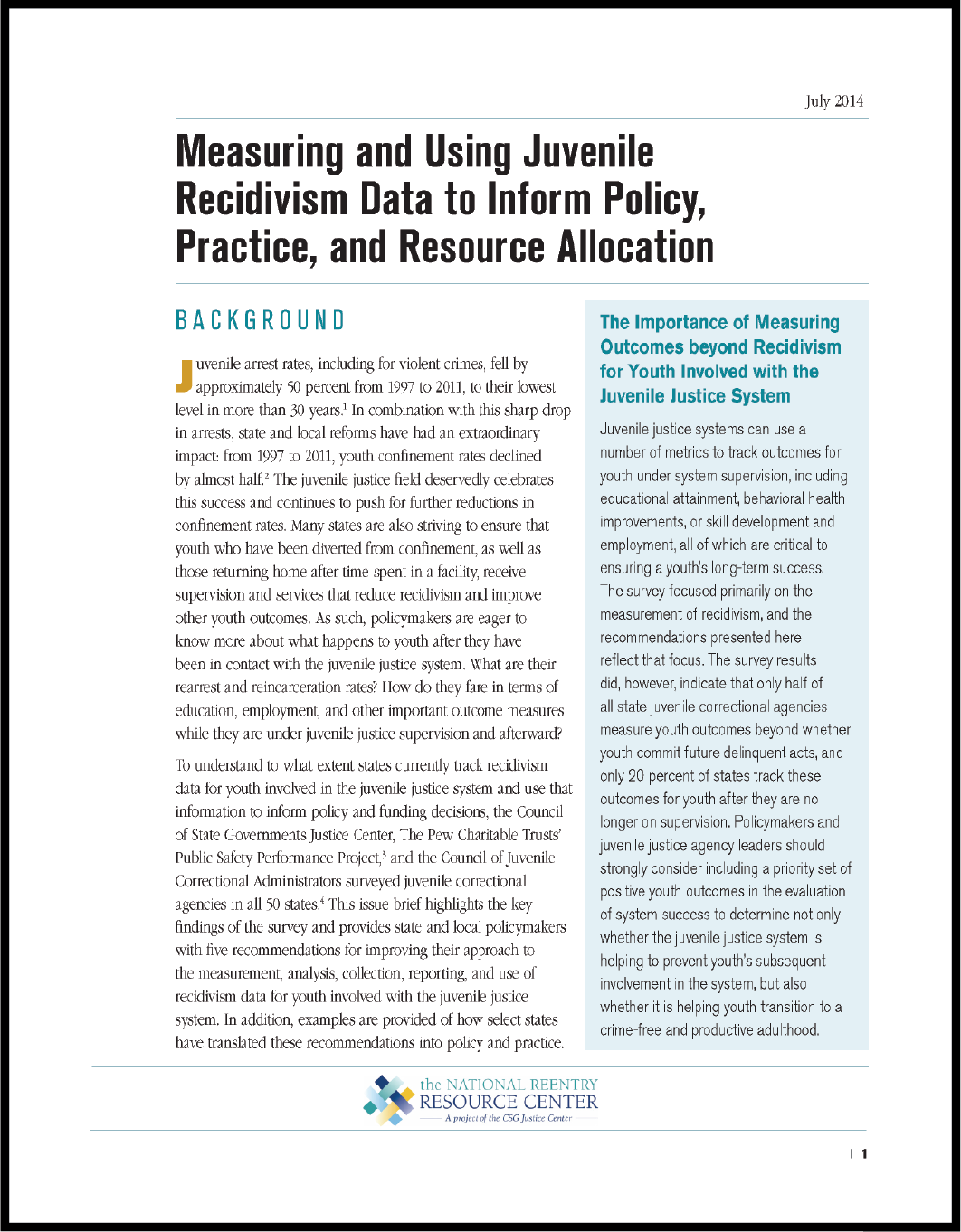
Policymakers are eager to know more about what happens to youth after they have been in contact with the juvenile justice system. What are their rearrest and reincarceration rates? How do they fare in terms of education, employment, and other important outcome measures while they are under juvenile justice supervision?
To understand to what extent states currently track recidivism data for youth involved in the juvenile justice system and use that information to inform policy and funding decisions, the Justice Center, The Pew Charitable Trusts’ Public Safety Performance Project, and the Council of Juvenile Correctional Administrators surveyed juvenile correctional agencies in all 50 states. This issue brief highlights the key findings of the survey and provides state and local policymakers with five recommendations for improving their approach to the measurement, analysis, collection, reporting, and use of recidivism data for youth involved with the juvenile justice system. In addition, examples are provided of how select states have translated these recommendations into policy and practice.
